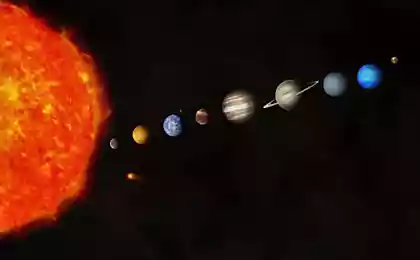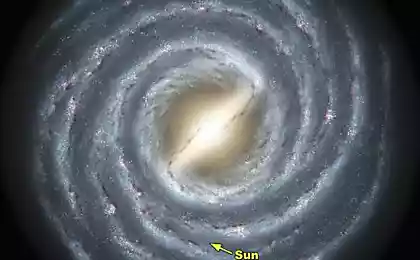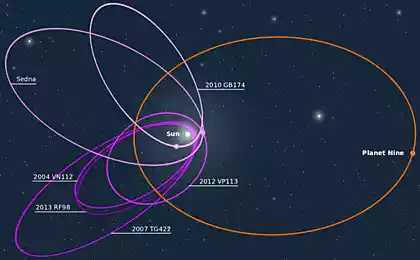2585
Mount Olympus - highest mountain in the solar system
Mount Olympus (lat. Olympus Mons) - an extinct volcano on Mars, located in Tharsis, the highest mountain in the solar system. Named for Mount Olympus in Greece, where, according to mythology, the gods dwell Olympians.
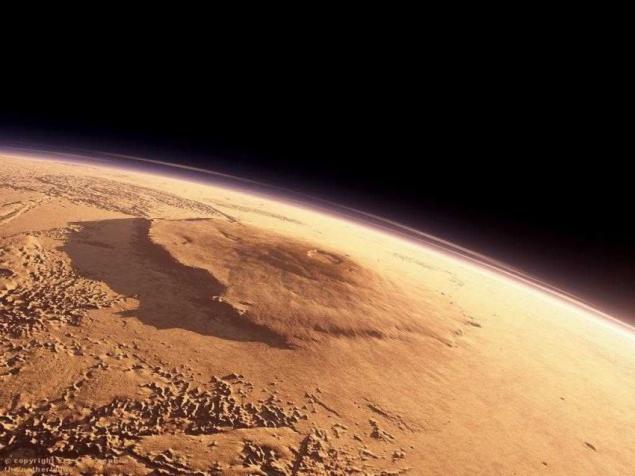
Before the flight of spacecraft (which showed that Olympus - mountain) the place was known to astronomers as Nix Olympica («Snow Olympus" - due to a higher albedo).
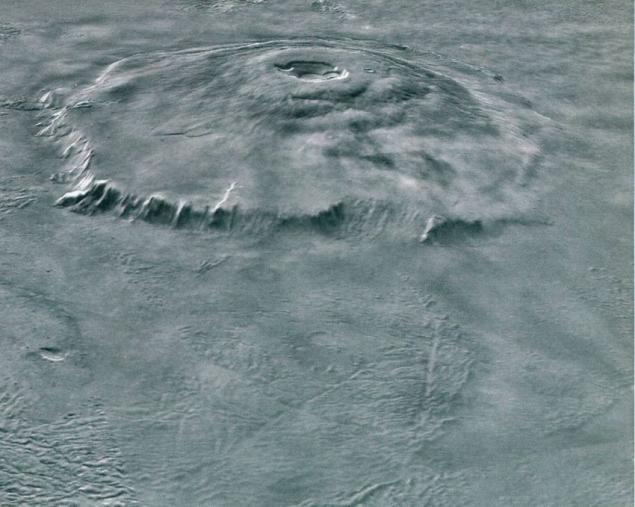
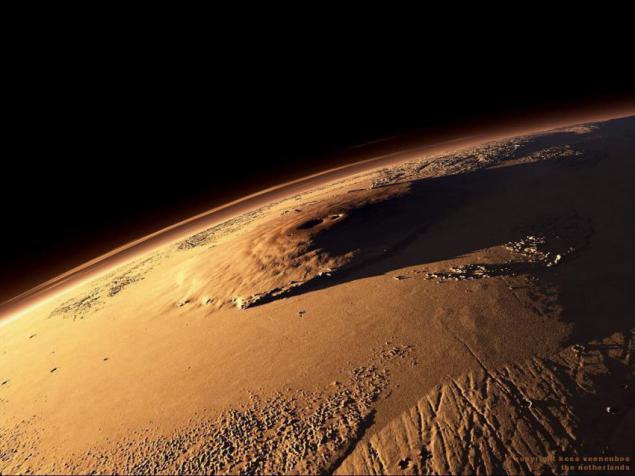
Height of Olympus - 26, 2 miles toward its base, which is more than twice the height of Mauna Kea, the tallest volcanic structure in the world (the height of about 10 km). Olympus extends for 540 km in width and has steep slopes at the edges of up to 7 km. Causes of these giant cliffs have not yet found a convincing explanation, though many are inclined to scour the slopes of the volcano once existed on Mars Ocean.
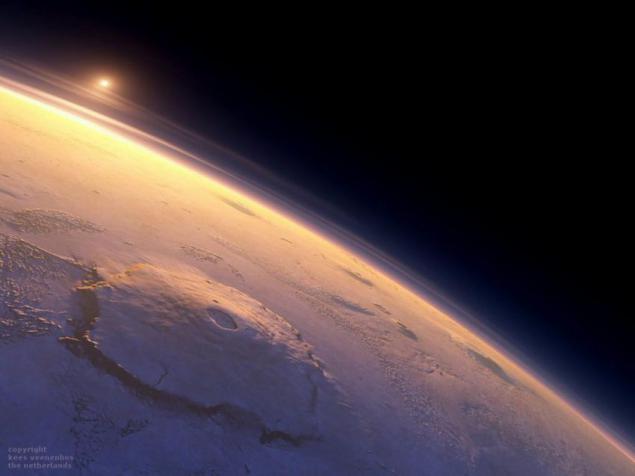
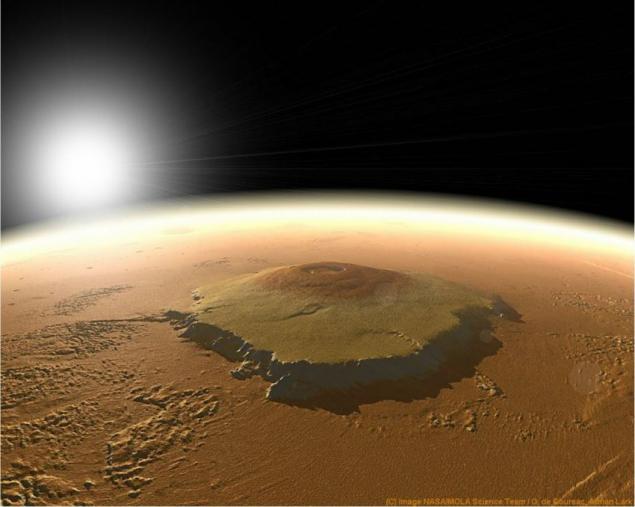
The length of the volcanic caldera of Olympus - 85 km, width - 60 km. The depth of the caldera reaches 3 km thanks to six volcanic craters. For comparison - in the Earth's largest volcano Mauna Loa in Hawaii, the diameter of the crater is 6, 5 km away.
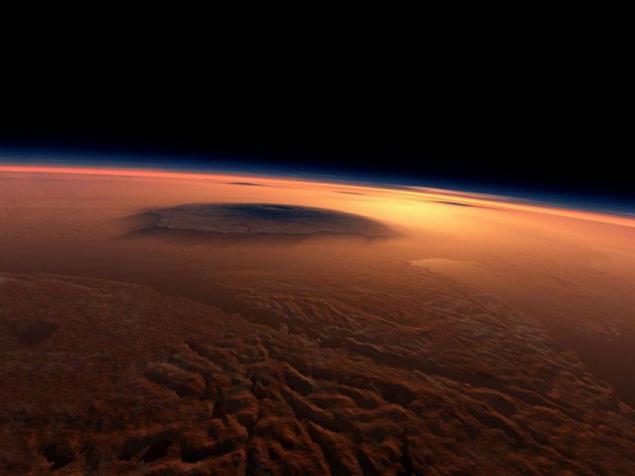
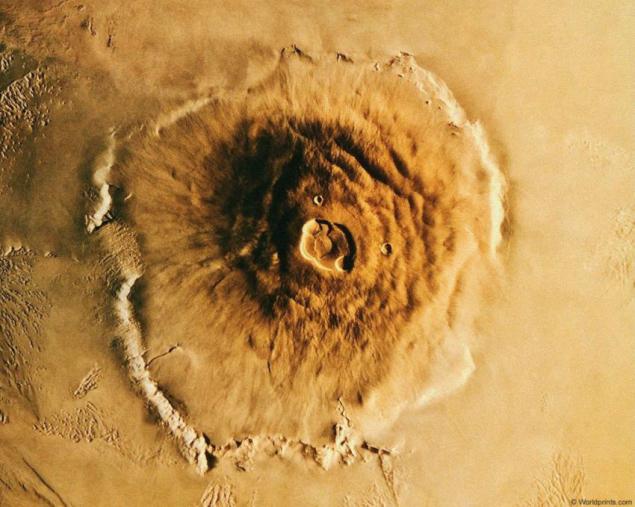
Atmospheric pressure on the top of Mount Olympus is only 2% of the pressure characteristic of the average Martian surface (for comparison - the pressure on the top of Mount Everest is 25% of the index at sea level).
--img8--
--img9--
Olympus occupies a large area so that it is completely impossible to see from the surface of the planet (the distance required for viewing the volcano, is so great that it will be hidden because of the curvature of the surface). So full of Olympus can be seen only from the air, or orbit. Similarly, if you stand on the highest point of the volcano, its slope will go beyond the horizon.
Olympus - extinct volcano formed through lava flows erupted from the depths and freezes. Since the width of the volcano more than an order of magnitude greater than the height of the eruption occurred a long time.
--img10--
--img11--
Analysis apparatus Mars Express images showed that the most recent lava on the slopes of Mount Olympus has an age probably only 2 million years, that is recently in geological terms. Thus, one can not exclude that the volcano will start to operate again.
The giant size of Olympus says that Mars probably has no plate tectonics like Earth. Since there is no movement of the plates, the volcano may exist for very long.
Olympus is in the Tharsis (or Tharsis), where there are a number of other volcanoes, including Arsiya, Pavonis (or mountain Peacock) and Askreus (or Askriyskaya Mountain), which also have huge size, though inferior to Olympus. These three volcanoes are located on the dome (or plateau) Tharsis and Olympus is located inside the cavities Tarsis (depth of 2 km).
--img12--
--img13--
The grounds surrounding the volcano, in many places covered with a network of small ridges and mountains. This mountain system called Halo Olympus. The halo extends to a distance of 1000 km from the top of a huge "petals". Origin of Halo among the Martian mysteries. One hypothesis relates the halo with the destruction of the slopes of Mount Olympus, the other - with a hypothetical glacial activity, according to another hypothesis - are the remnants of ancient lava flows undergoing degradation and erosion.
In some photos plots Halo made with high resolution, visible set of parallel strips - Yardang. Probably their direction reflects prevailing winds blowing in the area. Yardang usually formed on the surface easy to erosion, for example, volcanic ash.
--img14--
Source:

Before the flight of spacecraft (which showed that Olympus - mountain) the place was known to astronomers as Nix Olympica («Snow Olympus" - due to a higher albedo).


Height of Olympus - 26, 2 miles toward its base, which is more than twice the height of Mauna Kea, the tallest volcanic structure in the world (the height of about 10 km). Olympus extends for 540 km in width and has steep slopes at the edges of up to 7 km. Causes of these giant cliffs have not yet found a convincing explanation, though many are inclined to scour the slopes of the volcano once existed on Mars Ocean.


The length of the volcanic caldera of Olympus - 85 km, width - 60 km. The depth of the caldera reaches 3 km thanks to six volcanic craters. For comparison - in the Earth's largest volcano Mauna Loa in Hawaii, the diameter of the crater is 6, 5 km away.


Atmospheric pressure on the top of Mount Olympus is only 2% of the pressure characteristic of the average Martian surface (for comparison - the pressure on the top of Mount Everest is 25% of the index at sea level).
--img8--
--img9--
Olympus occupies a large area so that it is completely impossible to see from the surface of the planet (the distance required for viewing the volcano, is so great that it will be hidden because of the curvature of the surface). So full of Olympus can be seen only from the air, or orbit. Similarly, if you stand on the highest point of the volcano, its slope will go beyond the horizon.
Olympus - extinct volcano formed through lava flows erupted from the depths and freezes. Since the width of the volcano more than an order of magnitude greater than the height of the eruption occurred a long time.
--img10--
--img11--
Analysis apparatus Mars Express images showed that the most recent lava on the slopes of Mount Olympus has an age probably only 2 million years, that is recently in geological terms. Thus, one can not exclude that the volcano will start to operate again.
The giant size of Olympus says that Mars probably has no plate tectonics like Earth. Since there is no movement of the plates, the volcano may exist for very long.
Olympus is in the Tharsis (or Tharsis), where there are a number of other volcanoes, including Arsiya, Pavonis (or mountain Peacock) and Askreus (or Askriyskaya Mountain), which also have huge size, though inferior to Olympus. These three volcanoes are located on the dome (or plateau) Tharsis and Olympus is located inside the cavities Tarsis (depth of 2 km).
--img12--
--img13--
The grounds surrounding the volcano, in many places covered with a network of small ridges and mountains. This mountain system called Halo Olympus. The halo extends to a distance of 1000 km from the top of a huge "petals". Origin of Halo among the Martian mysteries. One hypothesis relates the halo with the destruction of the slopes of Mount Olympus, the other - with a hypothetical glacial activity, according to another hypothesis - are the remnants of ancient lava flows undergoing degradation and erosion.
In some photos plots Halo made with high resolution, visible set of parallel strips - Yardang. Probably their direction reflects prevailing winds blowing in the area. Yardang usually formed on the surface easy to erosion, for example, volcanic ash.
--img14--
Source:




